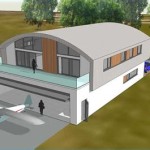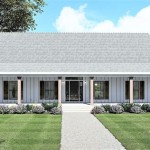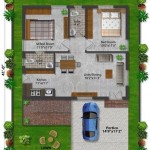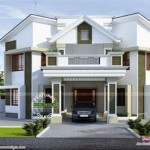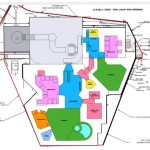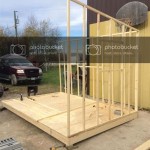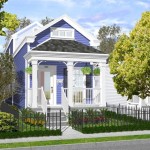Architectural Designs: Exploring the Allure of French Country House Plans
French Country house plans, often referred to as French Provincial, evoke a sense of rustic elegance and timeless charm. These designs draw inspiration from the rural estates and farmhouses of the French countryside, particularly the Provence region. Architectural characteristics typically include a harmonious blend of sophistication and simplicity, creating homes that are both visually appealing and functional for modern living.
The popularity of French Country architecture stems from its ability to create a warm, inviting atmosphere. The houses project an image of comfort and stability, reminiscent of a life close to nature. This aesthetic resonates with individuals seeking a refuge from the fast-paced nature of modern life, offering a tranquil environment that emphasizes family and community.
Designing a French Country home requires a careful consideration of various elements, from the overall floor plan to the selection of materials and architectural details. Understanding the core principles of this architectural style is essential for achieving an authentic and aesthetically pleasing result. This article explores the key features and considerations when selecting French Country house plans.
Key Point 1: Defining Characteristics of French Country Architecture
Several architectural hallmarks define the French Country style. These elements contribute to the overall aesthetic and create the distinctive character of these homes. Understanding these features is crucial when evaluating and selecting French Country house plans.
One of the most prominent features is the steeply pitched roof, often clad in slate or clay tiles. This design element not only contributes to the visual appeal but also provides practical benefits, such as efficient water runoff. The roof usually features dormers, adding character and providing natural light to the upper floors.
Facades are typically symmetrical or near-symmetrical, creating a sense of balance and order. However, this symmetry is often softened by the use of natural materials and landscaping. Stone, brick, and stucco are commonly used for exterior walls, creating a rustic and textured appearance. The integration of these materials is a key element in achieving an authentic French Country feel.
Arched doorways and windows are another defining characteristic. These architectural details add a touch of elegance and sophistication, softening the overall lines of the house. Shutters, often functional, are commonly used to frame windows, enhancing the visual appeal and providing added protection from the elements. These shutters often feature decorative cutouts, adding to the charm.
The use of natural materials extends to the interior as well. Exposed beams, stone fireplaces, and hardwood floors are common features in French Country homes. These elements create a warm and inviting atmosphere, contributing to the overall sense of comfort and relaxation. The interior design often incorporates muted colors and natural textures, creating a harmonious blend of rustic and refined elements.
Landscaping plays a crucial role in complementing the architectural style. Manicured lawns, flower gardens, and gravel pathways are commonly used to create a welcoming and visually appealing outdoor space. The use of climbing plants, such as ivy or roses, can further enhance the romantic and natural aesthetic of the home.
The integration of these defining characteristics is essential for creating an authentic French Country home. Careful attention to detail and a commitment to using high-quality materials are crucial for achieving the desired result. Understanding these core elements allows homeowners to select plans that truly capture the essence of this timeless architectural style.
Key Point 2: Considerations for Selecting French Country House Plans
Selecting the right French Country house plan requires careful consideration of various factors, including the homeowner's lifestyle, budget, and site conditions. Evaluating these aspects ensures that the chosen plan meets the specific needs and preferences of the individuals and family.
The size and layout of the house should align with the homeowner's lifestyle and family size. Consider the number of bedrooms and bathrooms required, as well as the need for dedicated spaces such as a home office, library, or media room. The layout should be functional and efficient, with a focus on creating comfortable and inviting living spaces.
The flow between indoor and outdoor spaces is another important consideration. French Country homes often feature patios, terraces, and gardens that extend the living area and provide opportunities for relaxation and entertainment. Consider how these outdoor spaces will be used and ensure that the house plan incorporates easy access and seamless transitions between the interior and exterior.
The orientation of the house on the site is crucial for maximizing natural light and ventilation. Consider the sun's path and prevailing winds when positioning the house on the lot. Proper orientation can significantly reduce energy consumption and create a more comfortable living environment. Large windows facing south can capture sunlight during the winter months, while strategically placed trees can provide shade during the summer.
Budget considerations are also paramount. French Country homes can be expensive to build, particularly if using high-quality materials and intricate architectural details. Establish a realistic budget and carefully evaluate the costs associated with each element of the design. Prioritize essential features and consider alternative materials or construction methods to reduce expenses without compromising the overall aesthetic.
Local building codes and regulations must be carefully considered. Ensure that the chosen house plan complies with all applicable zoning ordinances, building codes, and environmental regulations. Consult with local authorities and building professionals to ensure that the design is feasible and meets all necessary requirements. This proactive approach can prevent costly delays and complications during the construction process.
The long-term maintenance requirements of the house should also be considered. French Country homes often require regular upkeep to maintain their beauty and integrity. Consider the durability of the materials used and the ease of maintenance. Choosing low-maintenance materials can reduce the time and expense associated with upkeep.
By carefully considering these factors, homeowners can select French Country house plans that meet their specific needs and preferences, while also ensuring that the house is functional, aesthetically pleasing, and sustainable for years to come.
Key Point 3: Interior Design Elements Complementing French Country Architecture
The interior design of a French Country home should complement the architectural style, creating a cohesive and harmonious living environment. Specific design elements can enhance the rustic elegance and timeless charm of these homes, contributing to the overall sense of comfort and relaxation.
Color palettes in French Country interiors typically feature soft, muted tones inspired by nature. Creams, beiges, grays, and soft blues and greens are commonly used to create a calming and inviting atmosphere. These colors are often paired with natural materials such as wood, stone, and linen, creating a sense of warmth and authenticity.
Furniture should be comfortable and inviting, with a focus on natural materials and classic designs. Upholstered sofas and chairs with rolled arms and turned legs are typical choices. Distressed wood finishes and antique-inspired details can further enhance the rustic aesthetic. Consider incorporating vintage or reclaimed furniture pieces to add character and personality to the space.
Textiles play a crucial role in creating a French Country ambiance. Linen, cotton, and wool are common choices for upholstery, curtains, and bedding. Floral patterns, stripes, and toile prints are often used to add visual interest and personality. Layering textiles can create a sense of depth and texture, enhancing the overall warmth and comfort of the room.
Accessories and decorative items should reflect the homeowner's personal style and interests. Antiques, vintage finds, and handcrafted items can add character and charm to the space. Consider displaying collections of pottery, artwork, or family heirlooms. Natural elements such as fresh flowers, potted plants, and woven baskets can further enhance the connection to nature.
Lighting is an essential element of interior design. French Country homes often feature a combination of natural and artificial light. Large windows and skylights can maximize natural light, while chandeliers, sconces, and table lamps can provide ambient and task lighting. Choose fixtures with warm, inviting tones and consider using dimmer switches to adjust the lighting level to suit different moods and activities.
Fireplaces are often a focal point in French Country living rooms. Stone or brick fireplaces with elaborate mantels can create a sense of warmth and grandeur. Consider adding decorative elements such as candles, vases, or framed artwork to enhance the fireplace's visual appeal. A roaring fire can create a cozy and inviting atmosphere during the colder months.
The kitchen is the heart of the home in French Country design. A large farmhouse sink, open shelving, and a butcher block countertop are common features. Consider using natural materials such as wood and stone to create a rustic and inviting space. Displaying cookware and utensils can add a touch of personality and create a lived-in feel.
By carefully selecting interior design elements that complement the architectural style, homeowners can create a French Country home that is both beautiful and functional. A cohesive and harmonious design can enhance the overall sense of comfort and relaxation, creating a welcoming and inviting living environment.

Plan 48296fm Expansive French Country Home Architectural Design House Plans

Plan 93108el Exclusive 5 Bed French Country House Plans Architectural Design

Plan 70592mk 5 Bed Luxury French Country House With Separate But Attached Apartment Architectural Design Plans Layout

Charming French Country House Plan With Open Concept Living Space 56427sm Architectural Designs Plans

Plan 11789hz Well Appointed French Country Home Architectural Design House Plans New

Classic French Country Manor Home 48267fm Architectural Designs House Plans

Plan 83387cl Luxurious French Country House Plans Dream One Story

Home Plan Coach Hill Sater Design Collection

Luxury French Country House Plan With Four Car Garage 48536fm Architectural Designs Plans

Plan 17527lv Luxurious French Country Home For A Rear Sloping Lot House Plans

